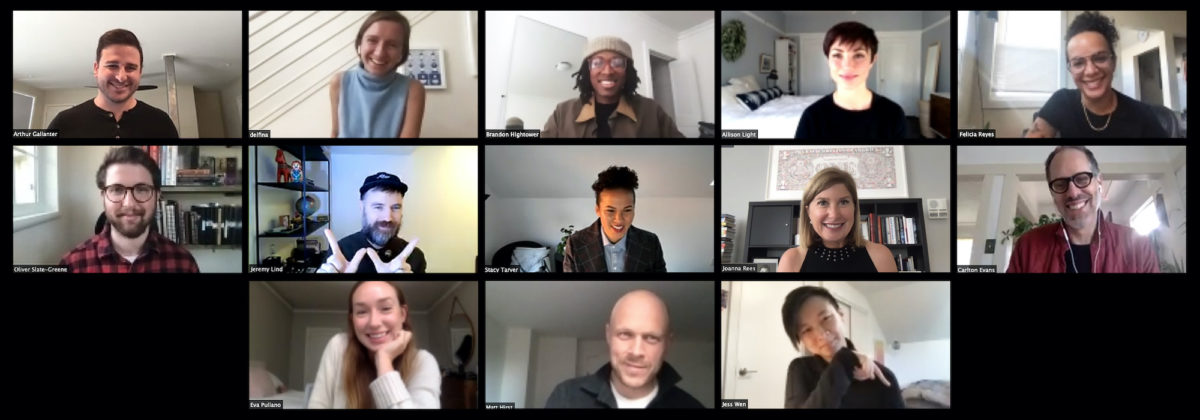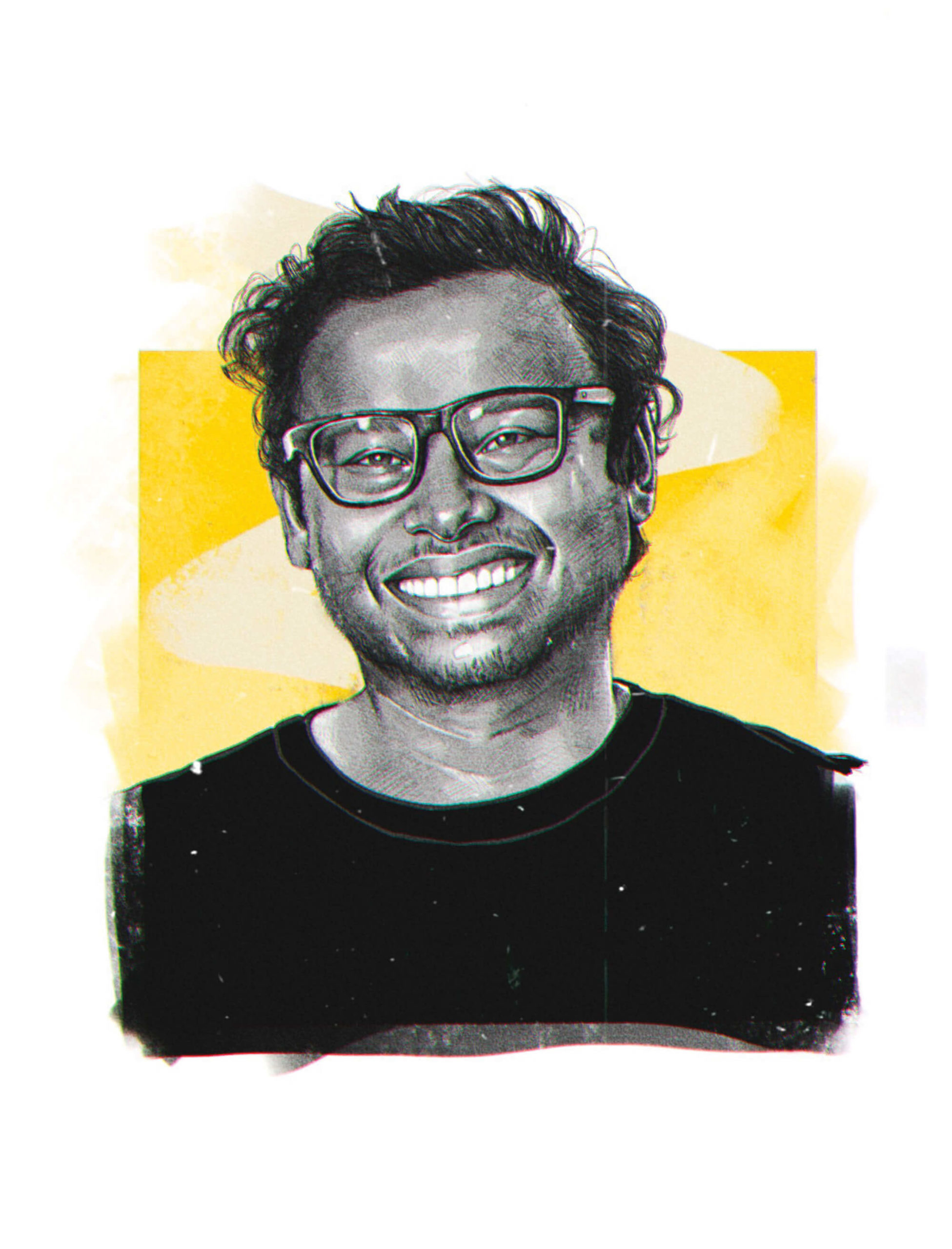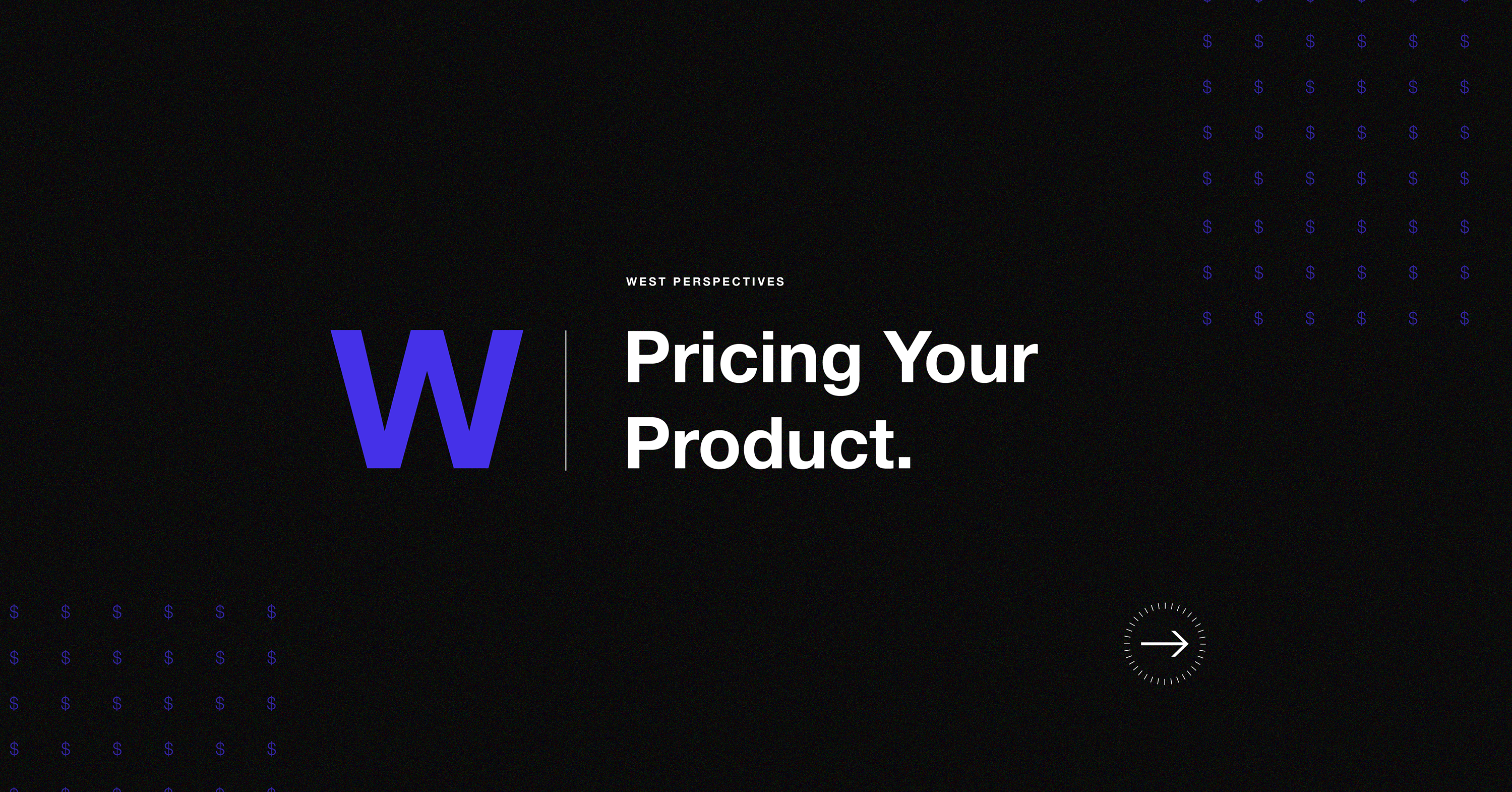As the West Venture Studio team wraps up projects and lays the groundwork for new ones, we’re also pausing to reflect on the giant and tumultuous year that was 2020.
With 2020 coming to a close, we would like to take this opportunity to thank each of you for being a part of our community and for the support you have shown us throughout the year. We are grateful to our team, and the teams of our studio and portfolio companies who have shown exceptional commitment and strength in these ever changing times.
We wrote in March of this year that the COVID-19 global health crisis has hit us all in a way very few could have imagined, and unfortunately we are still far from the end. In that same newsletter we also noted that, “as leaders, it is of the utmost importance to listen to your employees, customers, consumers and communities, learn from them, and respond with compassion.” As we close the chapter on 2020 and look towards 2021, these words continue to serve as a guiding light and of critical importance. And it is with this perspective that we approach 2021, ready to build.
On our partners
We were honored to work with more than 30 incredible companies this year––building brands at the forefront of their respective industries from healthcare and fitness, to entertainment, enterprise software, and the future of work. Our venture fund selectively invests in a few of our studio partners. It was an active year with 7 new seed to series B investments in companies including State Space, VergeSense, Solo Funds, Mab & Stoke, LogicInk, and others to be announced soon.
Some highlights from this year include LogicInk and Contakt World announcing their partnership to develop a COVID-19 Biosensor Sticker (via LogicInk) and Solo Funds being named Startup of the Year (via Established). This fall, Newfront Insurance announced it has raised over $100M to digitize insurance (via Forbes) while Proxy was featured as one of three innovations meeting the demands of the new Covid-19 world (via Inc.). At the beginning of the year, Torch announced its acquisition of peer-to-peer mentorship marketplace, Everwise, and has continued to scale its personalized coaching and development platform (via TechCrunch). A special shout out to Mursion, Impossible Foods, Proxy, and Nebia for being selected to Fast Company’s 2020 World’s Most Innovative List.
These are just a few of the publicly available moments. What isn’t included here are all of the hard work and accomplishments that don’t always make the news. Those moments are equally as important and we know the effort that goes into making deadlines, hitting OKRs, and accomplishing sprints.
On West Venture Studio
We are incredibly proud of how our team came together, rolled up their sleeves and got to work. This year we added two new team members––Oliver Slate-Green and Carlton Evans––and had six interns join us throughout the year.
Oliver joins as our Growth Marketing Strategist to help our portfolio companies and studio partners better define and reach their audiences by facilitating the art-meets-science process of answering: what are our known knowns, unknown knowns, unknown unknowns? Oliver is a person wholly obsessed with growth in its myriad forms and meanings. When not wrestling with existential quagmires, he is fixated on the perspective of the end user. He cut his teeth in the entertainment marketing industry before settling in for a nearly decade-long stretch at Fortune 500 companies, where he created strategies for and executed against go-to-market plans that moved needles (and broke servers!) for brands like Clif Bar, Fresh Step, Clorox, Teance Fine Teas, LUNA, Green Works, Glad, and more.
Carlton is a veteran producer and former academic with a passion for tackling the complexities required to translate a vision, feeling, and message into a meaningful experience for audiences. As Director of Production, he brings those long-standing interests to West where he leads multifaceted creative projects in the studio. A visionary film festival founder, curator, and entrepreneur, Carlton brings nearly two decades of creative production experience for a range of clients including Cisco, Facebook, Oakland Museum of California, and Mountain Hardwear to West. Carlton has had extensive experience leading diverse teams, producing television and film for over 15 years, with premieres at such prestigious festivals as Sundance, Tribeca, and SXSW. Carlton’s eye for innovative expressions led him to found the Disposable Film Festival in 2007, which celebrates innovation in new media filmmaking internationally. He also co-founded PROJECTOR, which brings companies, causes and directors together to create films inspired by revolutionary ideas. Carlton’s work at West brings his engagement with film and documentary full circle, helping new companies translate their stories and giving them life through multimedia.
We refreshed our brand (check out the new west.ventures) and many of our teammates shared their perspectives and expertise on our blog. Our most-read pieces of 2020 include a look at how China will impact the future of marketing, the importance of a good communication strategy, and how changing rates for social media influencers impact strategy.
In a recent year in review team meeting, we came together to discuss the many moments of the past year. As a full team, we spent more than 4,600 minutes together. We laughed, cried, played Codewords, learned to cook risotto, guessed obscure song titles, and most importantly we created space to share and listen to one another.
Onward
We will continue to make space to listen and learn from one another and are always here for you and our community.
We’re committed to partnering with exceptional founders to maximize their opportunity. We build for impact and in 2021, we look forward to doing just that.

What if you made a mistake in the blink of an eye? Would you forever be frozen at the time of that mistake even if it was only a millisecond? Too often this is the case for those who end up in the criminal justice system. They wish they could go back and erase that second. Their sentence doesn’t end at release. They are challenged to explain what happened for the rest of their life.
Since 1991, the number of incarcerated people in the U.S. has risen by 50% while violent crime has fallen by roughly 20%. Countless individuals and organizations have been working tirelessly in our country on the issues of mass incarceration and criminal justice reform, and the events of 2020 brought these conversations squarely to the national stage. A significant contributor to the cycle of incarceration is the lack of infrastructure and community support for employment, education, and housing opportunities upon release. In fact, nearly 75% of formerly incarcerated people are still unemployed a year after release. According to NAACP, joblessness is the single most important predictor of recidivism.
Earlier this year, West had the opportunity to partner with The Last Mile (TLM), a non-profit launched in 2010 by Chris Redlitz and Beverly Parenti to tackle the societal impact of incarceration and ultimately break the cycle of recidivism. Founded on the core belief that securing a job is the key to successful reentry, TLM’s mission is to provide opportunities for personal and professional growth for justice-impacted individuals through technology training. The incarceration process is dehumanizing at best and so TLM works to restore dignity within participants, instilling confidence through the TLM community and equipping them with the tools for success. They’re doing so with full-stack coding bootcamps across 23 classrooms and 6 states. TLM is the first organization to launch full-stack coding programs inside U.S. prisons and their work is bringing much-needed attention to this critical issue.
When the TLM team approached West, they expressed that a major pain point for the program is helping participants cultivate and unlock their personal brand stories. Even after successfully surmounting the challenges of gaining technical depth in coding while incarcerated with no access to the internet, graduating The Last Mile’s program, successfully reintegrating into society, and securing gainful employment, it can still be uncomfortable for The Last Mile Graduates to interact with new coworkers in an office environment. Graduates of the program expressed the need to better craft their personal mission and vision as it related to their new path. Our challenge was to create the tools and frameworks for participants to use in communicating their experiences, personal stories, and ultimately their personal brand to others.
What comes to mind when you hear the word “brand”? Is it the big legacy players like Nike and Coca Cola? Or is it the trendy vibes on your social media feed? Ultimately, a brand is the sum total of your interactions with that company. At West, we also believe that the most innovative (and valuable) companies can only become so when they build end-to-end experiences and therefore, brands, that truly address customers’ unmet needs. Individuals also have personal brands too, whether or not they cultivate them. The way you tell your story, how you carry yourself, the decisions you make, and your outlook in life all matter to your personal brand. And with social media platforms like Twitter and Instagram, the lines between personal and professional are blurring more than ever.
This was a unique opportunity for our team. There are major structural challenges and cultural stigmas working against formerly incarcerated individuals, and we were honored to lend our expertise in storytelling to aid this community in preparation for such a major and deeply personal transition. It was also a moment to apply our values––Truth-Telling, Uncommon, Relentless, Bold, Optimists-–firsthand. We historically haven’t shied away from “controversial” topics, rather, getting excited by the challenge and the possibility of creating something amazing, together. We understood it would take all of our truth-telling, uncommon thinking, relentless effort, bold action, and optimistic outlook to deliver value.
There are countless ways to tell any story, and while we typically focus on brands, we know that these core concepts apply to individual stories, too. So our first step was to design and lead a 3-hour workshop that fit TLM participants’ unique needs with exercises that created a safe space for the students and West team facilitators to connect, share, and co-create in-person at San Quentin. We were striving to create an environment and a framework in which TLM participants could realize and independently articulate their own North Stars.

As we worked together through this Personal Brand Workshop, we saw the incredible stories of the participants come to life. Participants - who have worked incredibly hard to get through a demanding program with TLM - honored their strength and found new and creative ways to express who they are, where they’ve been, and where they want to go. Our San Quentin visit was also our first experience applying this framework to the individual and based on team feedback we are now working to bring a version of this workshop to our broader community for use on their own time.
As 2020 comes to a close, we are excited to continue collaborating with TLM and their community. We can’t and won’t forget the numerous discussions we had as individuals and as a team, and our commitment to combat the institutionalized racism that exists in this country. While we began our partnership with TLM before conversations on civic justice reached their apex this year, through this workshop, we saw a meaningful opportunity to continue scaling this model in order to serve more participants of TLM. While COVID-19 halted many operations across the U.S. prison system, The Last Mile has been working tirelessly on new initiatives that will continue bringing value to program participants, and we are excited to continue this partnership and share more in the new year.
More to come from TLM and the West team!
This is the second post in a series on the topics that are top-of-mind for founders and the bite-sized building blocks needed for success.
Last quarter we dove into the fundamentals of building a consumer brand in 2020. With new companies and products slated to launch in the first half of next year, we wanted to address questions commonly asked by our founders when it comes to pricing their products, services, and overall businesses. Our Managing Director, Stacy Tarver Patterson, shared her initial thoughts during her Quora session, so we’re zeroing in on three concepts that can jumpstart any pricing discussion.
As a venture studio, our work sits at the unique intersection of brand strategy, creative, business strategy and venture capital. We work with founders and teams at key inflection points in their businesses––like launching a new product into the market. We can’t stress enough how important a role pricing plays in the way your business shows up in the market and how your potential customers perceive you. Pricing is not only a modeling question, it’s also a brand question.
One all too common mistake we see founders make is jumping right into excel––building the models and frameworks before answering the big strategic questions. While pricing models shift with business models (B2B, B2C, etc.), the strategies below are applicable to all models and markets and they will reframe your perspective to address the big strategic questions, first. We hope that these ideas will lay the foundation for a successful pricing strategy and provide tangible exercises to try when considering your pricing model and positioning in the market.
Price the problem, not the solution
Before you can set a pricing model that makes sense for your business, you need to consider what your product is actually accomplishing for your customers. Most customers care more about what issue they’re solving with your product than they do about the specifics of how it is being solved. How much money, time, or effort does your product save for your ideal customers? How much power, peace of mind, or joy do they gain with your product? Once you have those answers, you can better assess what your solution is worth to those who need it.
What else is in their basket?
After identifying the cost of the problem, it’s important to understand the full landscape of solutions and products that consumers currently use to accomplish their goal. For example, if your company is selling a product for runners, you should know how many dollars your ideal customer currently spends on running gear, equipment, and anything else that goes into their training. Even if your product is niche, try to imagine the bucket - and budget - your ideal customer would place your product in. Once you better understand their budget and the overall spending habits of the category, you can consider the “total basket,” or “total wallet,” size. This gives you the key to understanding how much a customer would be willing to pay for your product and what unexpected market share you may be capturing from your category.
Your price is not the final price
It’s important to look beyond the direct competition in the market. Consider what other factors may impact the final cost to your customer. Sales, promotions, partnerships, giveaways, price negotiations, inventory costs, and customer journey friction can all affect the sticker price. The specific outside factors absolutely will vary from business to business, but thinking ahead and considering how your price may be impacted – and as a result, your margins – by external forces, matters. Moreover, consider what is expected as a result of your branding. If your product exists in a luxury market, what is expected of something at that price? Make sure that when you factor in outside considerations, you don’t forget to include customer expectations.
Okay, so now what?
To help you get started, we created a quick template that can be used to kickoff any pricing conversation. On the template, you'll see an example on the right side. Use that to guide you throughout the exercise. You can view and download the template here.
And remember, pricing needs to be in lock step with your overall marketing! It’s an element of your brand that is critical to nail early on. Most companies only get to introduce themselves once, so ensuring that the price fits your customer’s needs and meets the expectations you set through your brand should be a top consideration.
For more brand fundamentals, check out Stacy Tarver Patterson’s 3 Essentials for Building Consumer Brands and Jeremy Lind’s guide to building the right Customer Journey.












